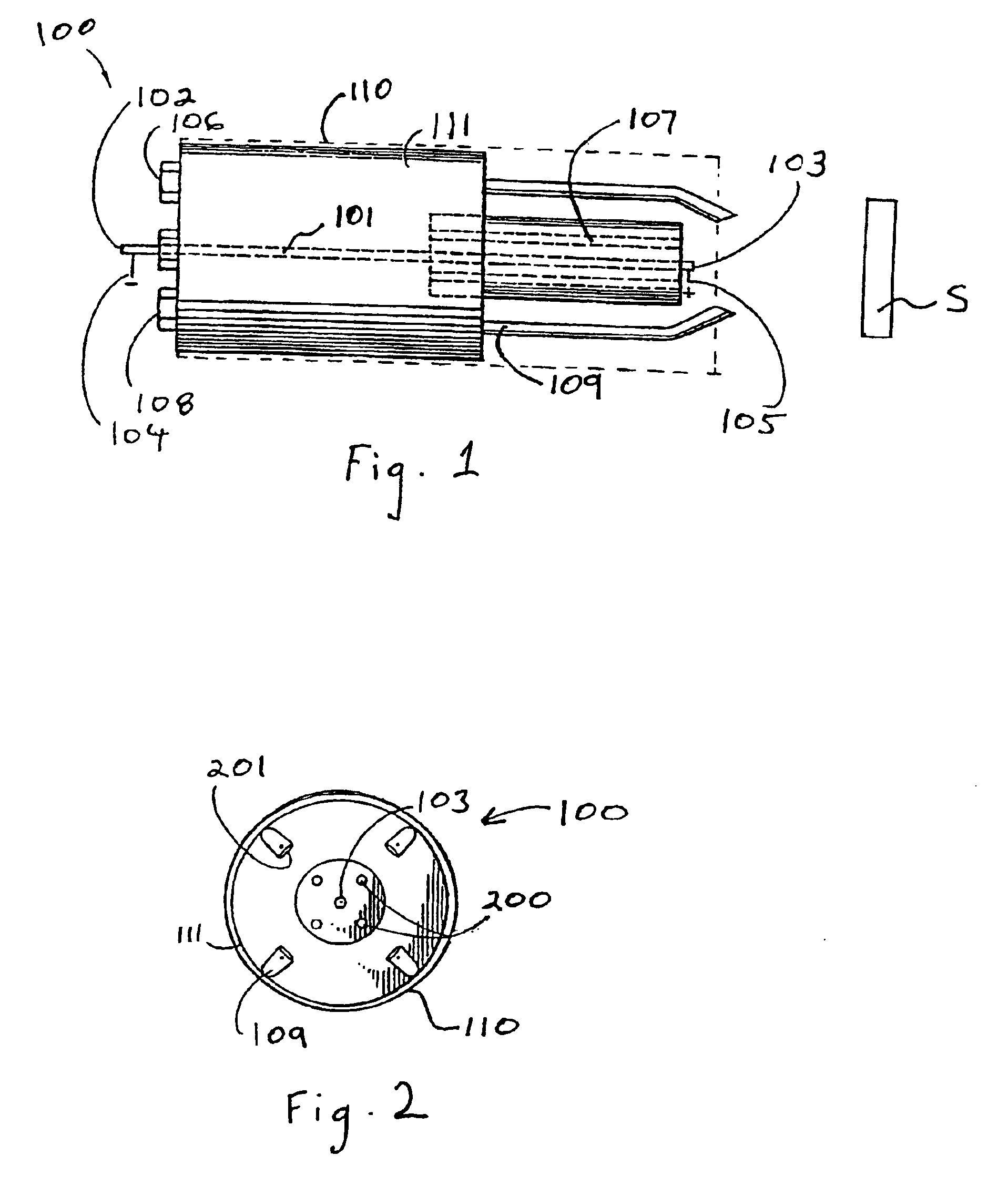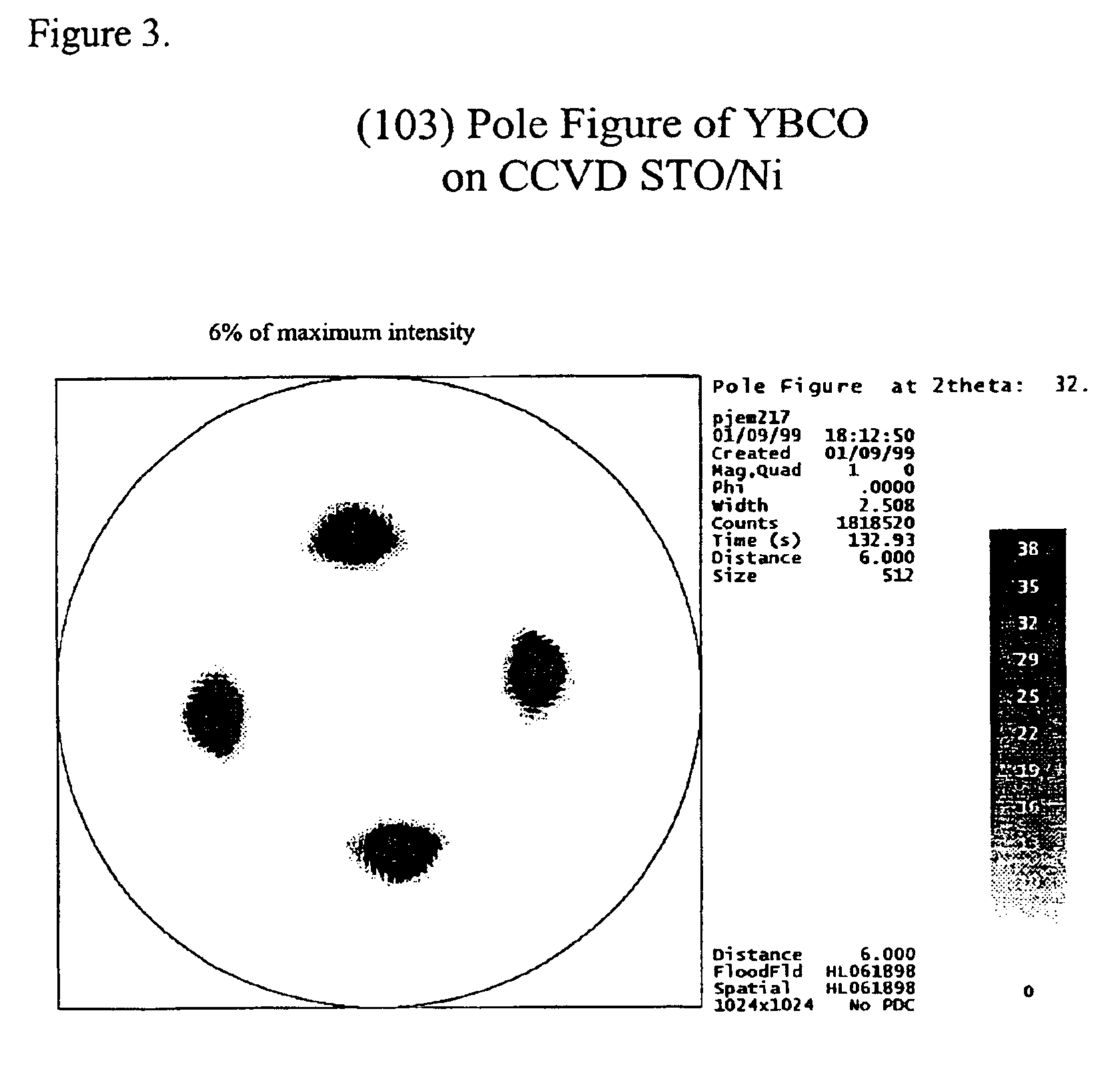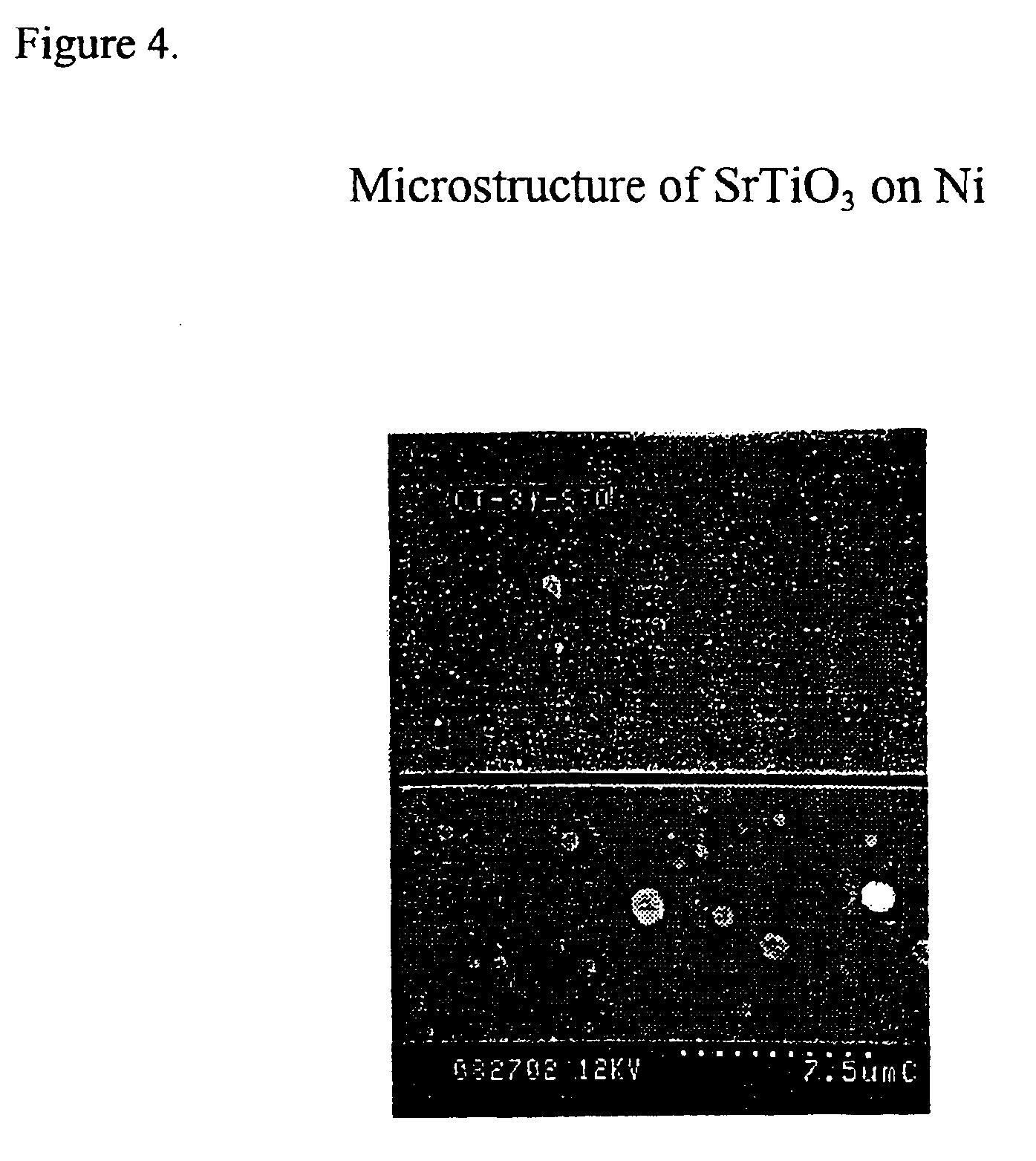Epitaxial thin films
a thin film, epitaxial technology, applied in the direction of thin/thick film capacitors, final product manufacturing, fixed capacitors, etc., can solve the problems of ybco, prior methods and products cannot compare to the cost reduction, and wire also suffers from performance limitations, etc., to achieve high permittivity, low loss for use, and high permittivity
- Summary
- Abstract
- Description
- Claims
- Application Information
AI Technical Summary
Benefits of technology
Problems solved by technology
Method used
Image
Examples
example 1
[0046]In this example, SrTiO3 (STO) was deposited on roll textured Ni. The precursor solution included 1.26 g of Sr-2-ethylhexanoate (2eh) (diluted with toluene to 1.5 wt % Sr), 1.11 g of Ti-di-I-propoxide bis acetylacetonate (diluted with isopropanol to 0.94 wt % Ti), 51 ml denatured ethanol and 300 g of propane. This solution was fed to the needle at a rate of 3 ml / min., while supplying 1.75 amps of heating current to the needle. Tip oxygen at 80 psi was supplied at a rate of 3 lpm, pilot hydrogen at 15 psi was supplied at a rate of 18 lpm and argon at 50 psi was used as the shield gas at a rate of 32 lpm. The deposition was conducted for 10 minutes with a substrate temperature of 950° C.
[0047]The deposited buffer layer was highly epitaxial and exhibited a single cube in-plane orientation as shown in FIG. 3. FIG. 3 is a pole figure of a YBa2Cu3Ox (YBCO) superconductor deposited on top of the CCVD deposited SrTiO3 buffer layer on Ni. The pole figure of the YBCO layer is exhibiting ...
example 2
[0056]In this example, LSM was deposited on a-plane sapphire using CCVD. The precursor solution comprised 0.21 g Mn-2eh (diluted with mineral spirits to wt % 6 wt % Mn), 1.96 g La-2eh (diluted with mineral spirits to 2 wt % La), 0.97 g Sr-2eh (10 wt % Sr in 2-ethylhexanoic acid and further diluted with toluene to 1.25 wt % Sr). This solution was added to toluene for a total volume of 10 ml, and then added to 60 g propane. This solution was fed at a rate of 3 ml / mn. for a total deposition time of 30 min. 2.42 amps of current were supplied to the needle with 3500 ml / min. of tip oxygen. Tip oxygen was 60 psi (with no hydrogen or argon). The flame temperature was maintained at 1200-1400 degrees C. In FIG. 8, the SEM micrograph of LSM on sapphire shows a porous and columnar microstructure. The porosity of the electrode layer must be sufficient for the transport of gaseous species or ions to the electrolyte while allowing for the collection of electrons from the associated electrochemical...
example 3
[0057]In this example, YSB was deposited on a-plane sapphire using CCVD. The precursor solution comprised 2.88 g Ba-2eh (8.5 wt % Ba in xylene and further diluted with toluene to 2 wt % Ba), 0.08 g Y-2eh (diluted with toluene to 0.69 wt % Y). This solution was added to toluene for a total volume of 10 ml, and then added to 60 g propane. This solution was fed at a rate of 3 ml / min. for a total deposition time of 29 min. 2.50 amps of current were supplied to the needle with 3300 ml / min. of tip oxygen. The flame temperature was maintained at 1200 degrees C. Tip oxygen was 60 psi (with no hydrogen or argon).
PUM
| Property | Measurement | Unit |
|---|---|---|
| thickness | aaaaa | aaaaa |
| temperatures | aaaaa | aaaaa |
| pressures | aaaaa | aaaaa |
Abstract
Description
Claims
Application Information
 Login to View More
Login to View More - R&D
- Intellectual Property
- Life Sciences
- Materials
- Tech Scout
- Unparalleled Data Quality
- Higher Quality Content
- 60% Fewer Hallucinations
Browse by: Latest US Patents, China's latest patents, Technical Efficacy Thesaurus, Application Domain, Technology Topic, Popular Technical Reports.
© 2025 PatSnap. All rights reserved.Legal|Privacy policy|Modern Slavery Act Transparency Statement|Sitemap|About US| Contact US: help@patsnap.com



